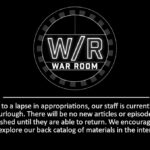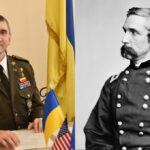
The problem is that we use this word indiscriminately with an assumption that it is commonplace and common sense.
The Army has a leadership problem, but the problem is not its people. It is in the word itself. Frankly, it has become meaningless. A buzzword. The problem is particularly acute following a crisis. We ask for more leadership, better leadership, or the removal of toxic leadership from our ranks as if the call were an incantation or talisman with ameliorative powers. We speak as if the meaning of leadership is instantly understood by all, and next steps are universally clear. They are not. This imprecision coupled to wholesale calls for action is unhealthy for the profession. It is time we take a hard look at what we mean when we say Army leadership.
You might think my criticism unnecessary and unfair. It may be right to say that it is too sweeping a condemnation for a term that had been the backbone of the military profession since its inception but consider that every one of the officers and NCOs suspended or relieved after the Fort Hood debacle specifically, or over the past year or two in general, were Army leaders. Each practiced Army leadership as they were taught and understood it. They read the right books, took the right courses, and were promoted because of their leadership success and potential. You might offer that many were toxic all along and simply escaped notice or evaded justice in their careers, but I think this is an argument that masks the underlying problem.
The problem is that we use this word indiscriminately with an assumption that it is commonplace and common sense. In the end we have a Rorschach test; we see what we wish to see. I am not alone in my assertion. There are scholars who now say that leadership is nothing more than influence created by social perception (pp. 499-505). Others go further and call it a social myth, or even a delusion. Seeing this as a profession, it seems to me that it is imperative we question our assumptions.
Doing this requires pushing back against a multi-billion-dollar leadership development industry with no shortage of commentary and advice. Amazon alone shows us 60,000 titles on leadership, and if that is not enough, we might take advantage of the hundreds of blogs, papers, podcasts, or TED Talks available. But if you look closely, you will note that many authors never define the term. Instead, they talk lot about competencies, behaviors, and styles needed to succeed as leaders, all assuming there is agreement as to what we are trying to achieve. What we need to do is to stop talking about these peripherals, the competencies, behaviors, and styles, that normally dominate our discussions and consider the substance of the term. We need to settle upon what leadership is before we can decide how it is done.
In the Army, leadership is the activity of influencing people by providing purpose, direction, and motivation. To me, the key word is “providing.” Leadership in this case relies on an understanding of who is in control. Broadly speaking, this would be the chain of command, and as ADP 6-0 (Mission Command: Command and Control of Army Forces) tells us, it exercises authority for mission success by (using the same words as in the definition of leadership) providing purpose, direction, and motivation (1-16). Mission Command (how the Army prefers to exercise command and control) emphasizes subordinate empowerment and a desire to build teams on trust, become risk tolerant, and encourage disciplined initiative. Great words and concepts all, and to me they echo much of what one sees in a standard leadership text. Do not mistake my comments for denigration. I am a strong advocate for what ADP 6-0 is trying to build, but would argue that it shows the line between Army Command and Army leadership is blurry enough to warrant the skeptic’s claim that leadership is nothing more than a social perception. The task, then, is to define leadership in a way that separates it from what we are already doing when in command.
Some scholars say that leadership is a relationship. We can debate toward what end we have this relationship (change, collaboration, action, meaning making) but at its core, it changes the substance of leadership from leader-centric to a dynamic among many. Still other scholars take aim at leadership as an action, claiming that leadership advances creation, or enlivens the human spirit.
It is important to see that each of the above focuses on what leadership is, not on what it does or how to do it. This view at the substance matters because somewhere along the way we need to get practical and talk about how we practice and teach and we now have a clear idea of what we are trying to achieve.
Think about some of the words typically associated with leadership and leading, simple words like trust, empowerment, communication, and empathy.
Think about some of the words typically associated with leadership and leading, simple words like trust, empowerment, communication, and empathy. These are words that we use casually every day but hardly ever think about. Empowerment sounds good on the surface. You give me power to act. But who are you to empower me? Unless we are talking about management or command authority, this is patronizing. If leadership is a relationship, I would say that empowerment is not granted but self-evident.
Communicating for a relationship demands something different than communicating to provide purpose. This is particularly true when that relationship includes people from diverse backgrounds and points of view.
Leaders are often called to be empathetic, but the substance of what leadership is matters to what we hope to see. If empathy is for getting things done it can much more easily come across as manipulative. If it is for the betterment of our person—in other words if it’s not about my needs but yours—it is more apt to be taken as sincere. It becomes leadership and not dressed-up authority. Because I am my own person, and it is my choice about how I will act. Perhaps leadership is respecting individuality.
Critics tell me that this is all nonsense. To them the question “what is leadership?” is self-evident and based on decades of scholarship and practice. They have a case, but it is also possible that what we currently label as leadership (and judge as success or failure) derives from the thinking and actions of a small subset of wealthy, educated, European men from a century long past. Although this might be fine, it is also possible that it is constraining to millions. If today a team of women in Ghana create a definition of leadership that at once becomes the universal standard by which all of us measured ourselves good or bad, would you remain a leader?
It is entirely possible that these women would arrive at a very different conclusion about what is right than did our leader-centric, action-centered collection of Western behaviors. It is then equally possible that is what we’ve done for years to other members of our diverse team.
This call for change is not about abdication of responsibility or a rejection what makes a unit efficient and successful. We will always need authority to provide purpose, direction, and motivation to accomplish the mission, and Soldiers understanding this.
But if leadership meant something distinct from this concept of management, if the label of leader meant something more than a position on the hierarchy, I think it is possible that we can shift our culture away from the one that produced the sickening events at Fort Hood. Please know that changing the definition is not just about avoiding problems. As I wrote years ago, it is also necessary to fully realize the benefits of mission command.
At heart, I contend that the Army would be a better place if we stopped exhorting our people to get to know their subordinates so they can better provide purpose, direction, and motivation, or in other words, practice Army leadership. Imagine if we got to know our people for the sake of a relationship, seeing leadership as having more to do with creating in them a sense of agency rather than providing them with direction.
Leadership is not the same as management, and it is not a brand of management “with a kind face.” It is distinct, and its meaning has consequences for who we are and what we do. It is time that we as a profession clarify our terms and build development programs that are not echoes of command and authority. Leadership should not be a buzzword, and our refusal to be so imprecise about its meaning might mean the difference between another Fort Hood tragedy and a resilient team of people ready for the challenges of the coming decades.
Colonel (USAR Ret.) Thomas Williams taught leadership (part-time) for many years, but is now retired.
The views expressed in this article are those of the author and do not necessarily reflect those of the U.S. Army War College, the U.S. Army, or the Department of Defense.





Awesome read! I always liked listening to you when it came to this stuff, but you already know that.